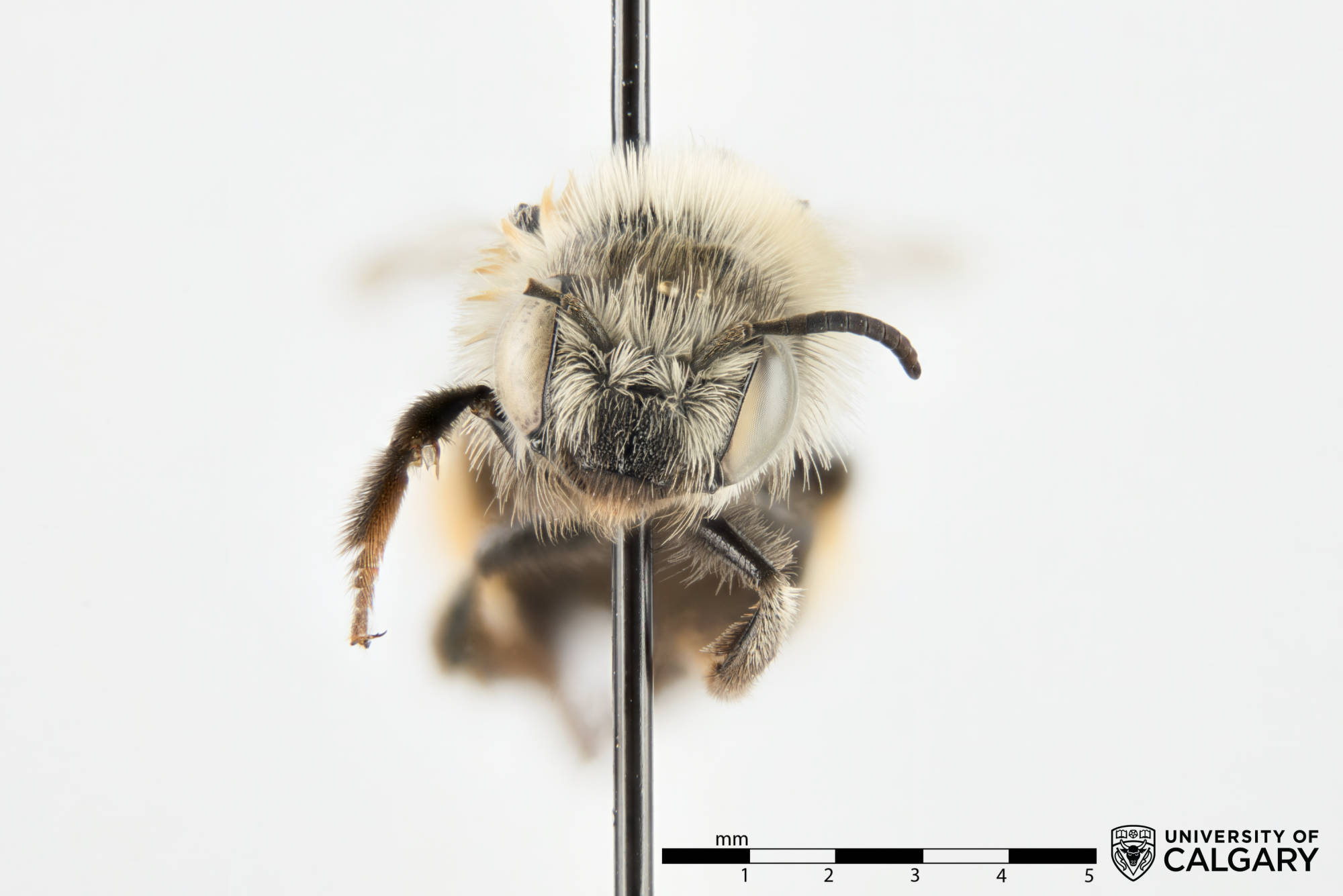The following is a list of bee genera found in Alberta, courtesy of Lincoln Best as part of the Calgary Bee Project. Each genus is written with the researcher who described it as well as the date it was discovered.
Family Colletidae – Plasterer Bees
The plasterer or polyester bees are named after the cellophane-like secretions they apply with their mouthparts. They use these secretions to line the walls of their nests, smoothing them down and waterproofing them. They’re all solitary bees, but they are known to nest in aggregations.
Colletes – Latreille (1802)
Hylaeus – Fabricius (1783)
Family Andrenidae – Mining Bees
The mining bees are a large and diverse family of bees, being found all around the world except Australia. They all make their nests in the ground, burrowing into soft soil to lay their eggs.
Andrena – Fabricius (1775)
Pseudopanurgus – Cockerell (1897)
Panurginus – Nylander (1848)
Perdita – Smith (1853)
Calliopsis – Smith (1853)
Family Halictidae – Sweat Bees
Sweat bees, as the name implies, are often attracted to perspiration. They are one of the largest families of bees in terms of both diversity and individuals, and most nest underground or in rotting wood.
Dufourea – Lepeletier (1841)
Agapostemon – Guerin-Meneville (1844)
Halictus – Latreille (1804)
Lasioglossum – Curtis (1833)
Sphecodes – Latreille (1804)
Family Melittidae – Oil Collecting Bees
The Melittidae family is small, with most of the diversity being found in South Africa and temperate places in the northern hemisphere. The genus found in Alberta, Macropis, does not line its nest with secretions; instead, it uses oil collected from flowers.
Macropis – Panzer (1808)
Family Megachilidae – Mason Bees, Leaf Cutter Bees, Carder Bees and Resin Bees
The Megachilidae are a large group of long-tongued bees, with a range of strategies to construct their nests. Leaf cutter bees use pieces of carefully cut leaves or pollen to line their nests, while mason bees use bits of mud or wood to build up naturally occurring holes for their nests. Carder and resin bees use plant/animal fibers and plant resins respectively.
Ashmeadiella – Cockerell (1897)
Heriades – Spinola (1808)
Hoplitis – Klug (1807)
Anthidium – Fabricius (1804)
Dianthidium – Cockerell (1904)
Stelis – Panzer (1806)
Coelioxys – Latreille (1809)
Megachile – Latreille (1802)
Lithurgus – Berthold (1827)
Osmia – Panzer (1806)
Family Apidae – Carpenter Bees, Squash Bees, Bumblebees and Honey Bees
Most of the more well-known bees are found in the Apidae family, including honeybees and bumblebees. They’re the other group of long-tongued bees, with the first being the Megachilidae. Carpenter bees are known for their ability to build nests in hard substrates like wood, while squash bees are known for their selective foraging on members of the gourd family. Bumblebees and honeybees are two social groups that live in colonies, feeding on nectar while foraging for pollen.
Ceratina – Latreille (1802)
Nomada – Scopoli (1770)
Epeolus – Latreille (1902)
Triepeolus – Robertson (1901)
Holcopasites – Ashmead (1899)
Neolarra – Ashmead (1890)
Epeoloides – Giraud (1863)
Diadasia – Patton (1879)
Eucera – Scopoli (1770)
Melissodes – Latreille (1829)
Tetraloniella – Ashmead (1899)
Anthophora – Latreille (1803)
Habropoda – Smith (1854)
Melecta – Latreille (1802)
Xeromelecta – Linsely (1939)
Zacosmia – Ashmead (1898)
Bombus – Latreille (1802)
Apis – Fabricius (1758)
